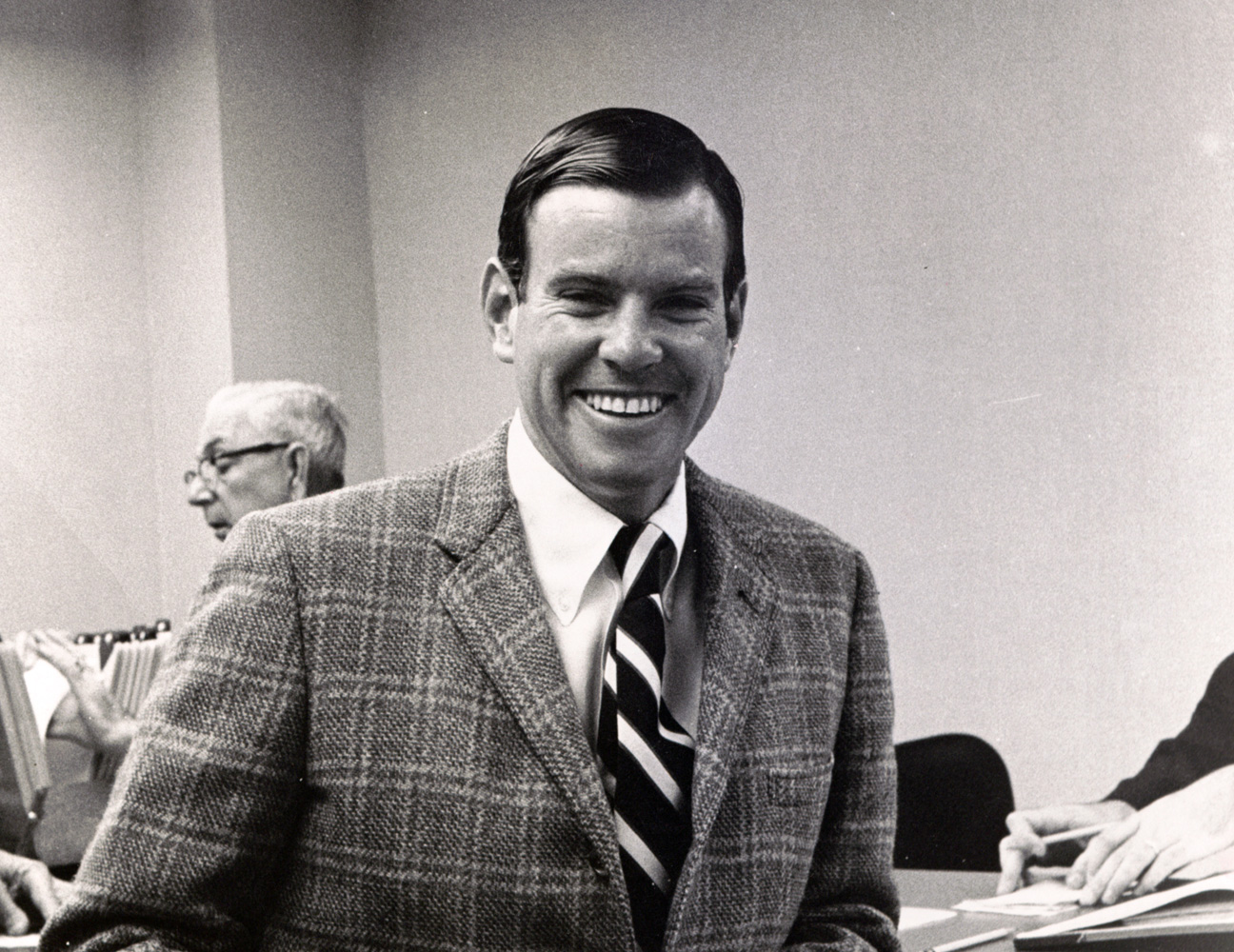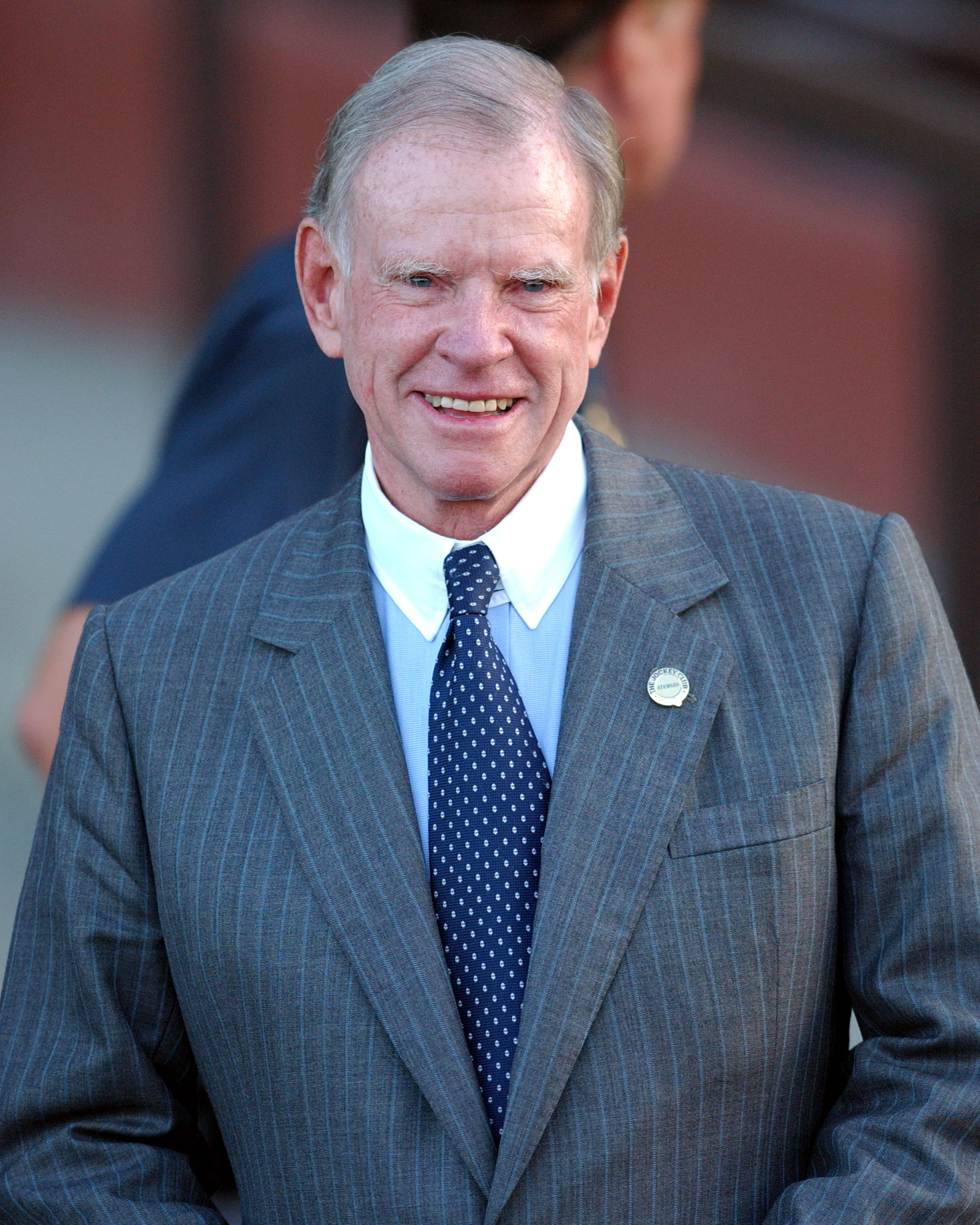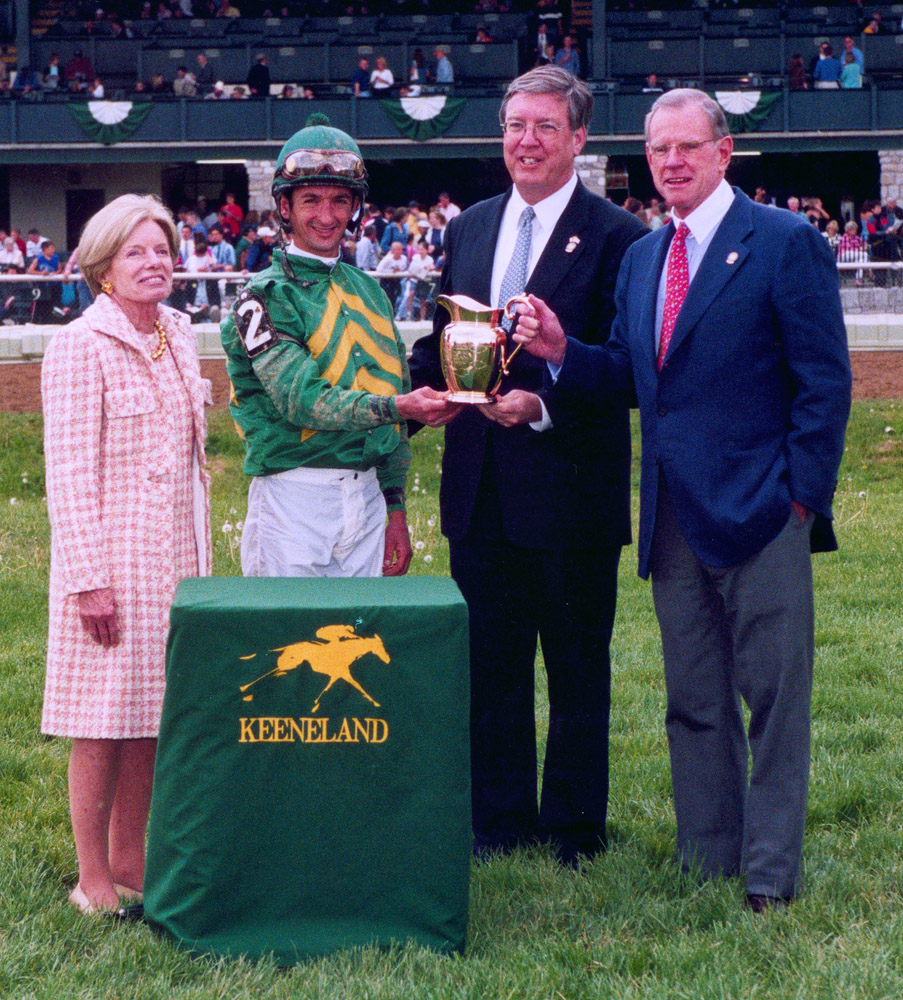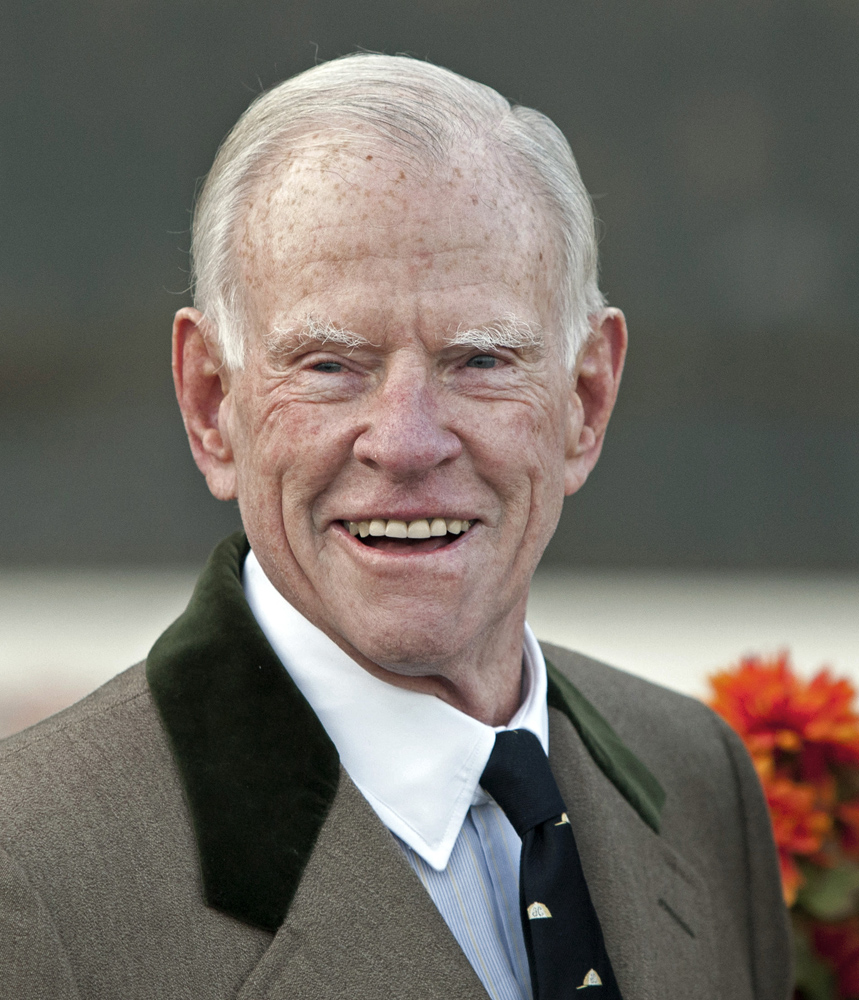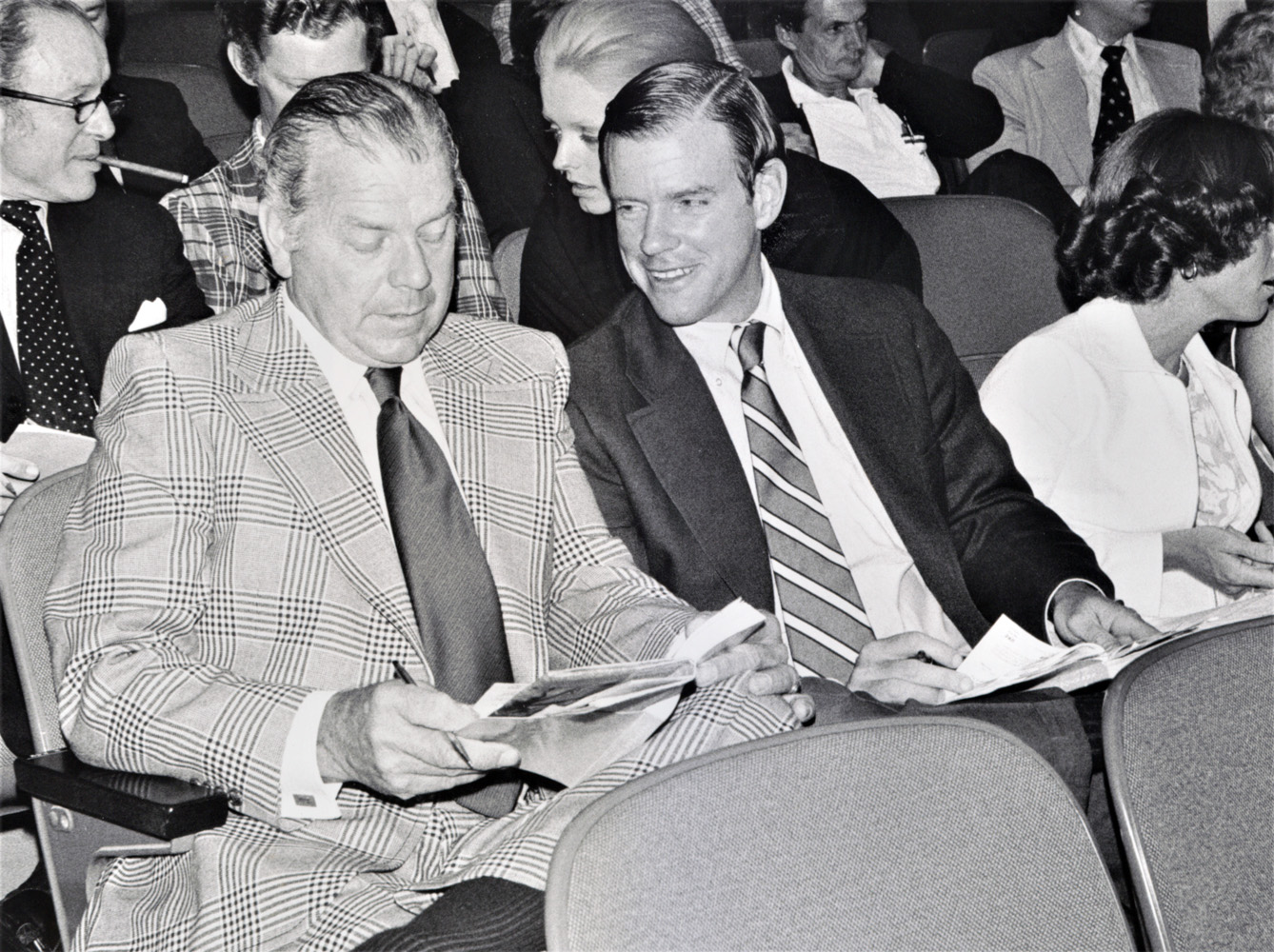William S. Farish
William S. Farish was not being ironic when he named his Kentucky farm Lane’s End. The name evokes a charming country scene where a lightly traveled lane — perhaps not even paved — leads to a small farm tucked into the countryside. That is very much the image Farish had when he launched the operation in little Versailles, Kentucky, intending it to be far different from his 1,200-acre Huisache Ranch in Texas.
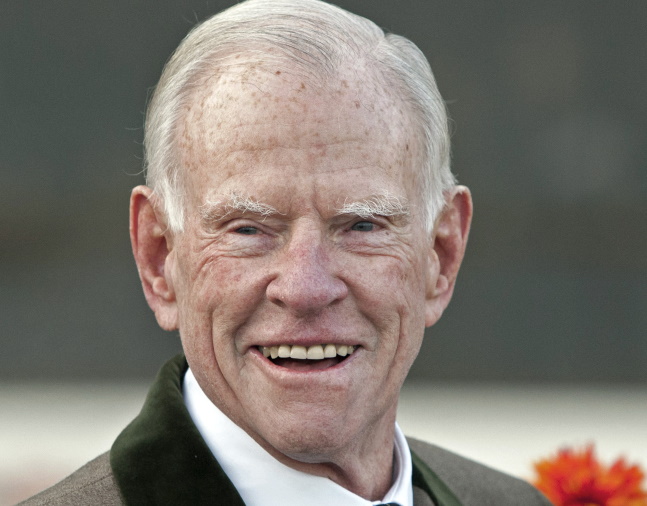
2019
March 17, 1939, Houston, Texas
Biography
William S. Farish was not being ironic when he named his Kentucky farm Lane’s End. The name evokes a charming country scene where a lightly traveled lane — perhaps not even paved — leads to a small farm tucked into the countryside. That is very much the image Farish had when he launched the operation in little Versailles, Kentucky, intending it to be far different from his 1,200-acre Huisache Ranch in Texas.
Farish was born in Houston, Texas, but it is not fair to generalize that, “of course Lane’s End would not stay small; the owner was a Texan, after all, and an oil man to boot.” Lane’s End grew to 2,300 acres not because such growth was inevitable; it grew because of success, and success built upon itself in multiples of acreage. Soon Farish had one of the most prestigious stallion operations, breeding farms, and commercial farms in the thoroughbred world. Even that, and Huisache, could not contain all his thoroughbred enterprises, for he also entered into an agreement to operate the Oak Tree division (Kentucky) owned by the Niarchos family of Europe.
Farish’s grandfather, William Stamps Farish, Sr., moved his family from Texas to New York after his deft business skills took him to the presidency of Humble Oil and then to chairmanship of Jersey Standard. Will Farish of Lane’s End actually is William S. Farish III (his father, William Stamps Farish II, was killed in an airplane accident during World War II.) Long ago, he simplified his name for virtually all situations (save perhaps for his term as the United States’ ambassador to Great Britain.) His son, a fourth William S. Farish, goes by Bill Farish, Jr.
After attending the University of Virginia, Farish dealt on Wall Street, then in international mining and exploration. He also became a founding director of the New York holding company Eurus and of Capital National Bank of Houston. He was preceded in his interest in thoroughbred racing by his grandfather, who raced horses, and grandmother, Libbie Rice Farish. The latter, when a widow, partnered with a daughter, Martha Gerry, in the name of Lazy F Ranch.
Farish also had a racing connection through his marriage to Sarah, daughter of Bayard Sharp, owner of major winners Troilus and Hannibal. His first runners were in partnership with his father-in-law, while another influence was in polo, the pursuit of which led to a friendship, and thoroughbred partnerships, with Michael Phipps.
From a strong hand of influences, Farish was to deal his own cards with barely imaginable success. From his stakes win in 1967 with Kaskaskia, Farish upped the ante to classic headlines when his Bee Bee Bee defeated Kentucky Derby winner Riva Ridge in the 1972 Preakness. Both Kaskasia and Bee Bee Bee had been purchased, but it was in breeding major winners — for himself, partners, and clients — that was to define Lane’s End ventures for the most part.
Through 2019, Farish had achieved staggering totals: More than 300 stakes winners bred and more than 165 raced. Again, various among them were owned by partners as Farish advanced the sport by including — and doing very well by — a series of friends. He was voted Eclipse Awards as outstanding breeder in 1992 and 1999.
In the latter year, he had become the first breeder since A. J. Alexander to breed a combination of horses which won all three Triple Crown races in the same year. The Farish-breds were Derby and Preakness winner Charismatic and Belmont winner Lemon Drop Kid. Charismatic was one of three Horses of the Year Farish bred, the others being A.P. Indy (1992) and Mineshaft (2004). Farish thus became the first involved in breeding as many as three Horse of the Year honorees since Calumet Farm’s Warren Wright, Sr. bred five in the 1940s.
Mineshaft’s career was influenced by Farish having been appointed Ambassador to Great Britain by President George W. Bush, for the colt was sent to England for his initial racing. Mineshaft emerged as a champion only after being returned to America, but Farish did impress his hosts abroad by winning their classic Epsom Oaks with homebred Casual Look.
The first of the Farish-bred Horse of the Year champions, A.P. Indy, also represented another aspect in which Farish excels, the commercial market. He was the top-priced yearling of 1990 when he brought $2.9 million two months after half-brother Summer Squall had won the Preakness. Summer Squall, who raced for Cot Campbell’s Dogwood Stable, stood at Lane’s End and sired Charismatic. A.P. Indy also was brought home for his stud career and developed into an international influence and champion of the old Bold Ruler sire line, via his own sire, Seattle Slew. The $2.9 million for A.P. Indy was dwarfed by the record yearling sale Farish and frequent partner Warner L. Jones, Jr. attained for Seattle Dancer. That son of Nijinsky II was a half-brother to Seattle Slew, and he sold for $13.1 million at Keeneland in 1985.
Even with so many exceptionally talented and proven runners accounting for generations of distinguished horses, a colt that never won a stake rose to heights among horses Farish bred. This was Danzig, bred in partnership with Marshall Jenney of Pennsylvania. Danzig was too unsound to race more than three times but sired 188 stakes winners in a career of lasting international importance.
Farish has exemplified the turfman’s code of giving back, both to the sport and to other areas of society. He accepted the mantle of chairmanship of Churchill Downs, with its inherent responsibility of fostering and protecting the Kentucky Derby. He held that post from 1992 until 2001. He also completed 13 years as one the three trustees at the top of the chain of command of the Keeneland Association. Other key positions of leadership and service have included chairmanship of the American Horse Council, vice chairmanship of The Jockey Club, and chairmanship of the Breeders’ Cup executive committee. Meanwhile, the family-managed William Stamps Farish Fund has been supportive of various causes, including the Grayson-Jockey Club Research Foundation and Maxwell H. Gluck Center.
Farish’s honors from within racing also include the testimonial dinner of the Thoroughbred Club of America as well as the Eclipse Award of Merit.
Achievements
Eclipse Award for Outstanding Breeder — 1992, 1999
Eclipse Award of Merit — 2009
Triple Crown Highlights
Won the 1972 Preakness Stakes — Bee Bee Bee
Media
